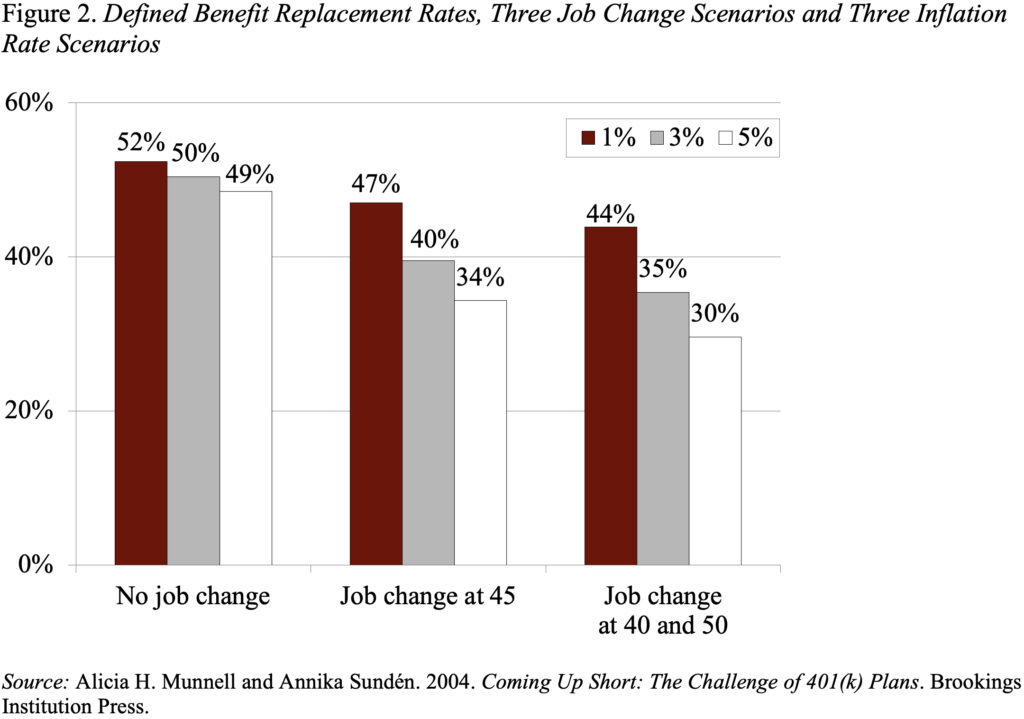Don’t Pay Back Private Sector Defined Benefit Plans – Center for Retirement Research

They are not good for employees and they interfere with the important issue: continuous installation.
What I don’t understand about some of my colleagues is their enthusiasm for defined benefit plans – especially for “traditional” plans where benefits are equal to, say, 1.5 percent of final salary for each year of service, where final salary is defined. like five years ago, and benefits are not adjusted for inflation after retirement.
Traditional defined benefit plans will not be good for many private sector workers – a point driven by recent inflation. Inflation destroys the value of benefits in the accumulation phase and destroys the real value of benefits that can be identified in retirement.
The lack of a defined benefit pension index is obvious; millions of families have seen the purchasing power of their incomes drop by more than 20 percent since inflation began in 2021. That is an eternal loss that can never be recovered.
Less visible is the effect of inflation on the accrual side of defined benefit pensions, where job fluctuations significantly erode retirement income. And the workers are doing the work of changing. Among those aged 45-49, only about one-third of workers had been with their employer for more than 10 years (see Figure 1). While the question of whether mobility has increased over time is debatable, the fact that the US has a highly mobile workforce is indisputable.
Combining job fluctuations and inflation means that workers with defined benefit plans are seeing a significant decrease in their retirement income. That is, employees with such job-changing plans, even among firms with similar plans and immediate cash-outs, receive significantly lower benefits than employees with continued employment under the same plan – assuming that these employees have the same future earning potential as they would have if they changed jobs. The reason that career changers have less retirement wealth is because their benefits are based on earnings at the time they leave work. Workers who do not change jobs see the earnings used to calculate retirement benefits rise over their jobs, due to inflation and productivity growth. Career changers, however, lose out on the increase in their retirement benefits resulting from this increase in earnings. This difference is greater when inflation is faster, because the final earnings of previous jobs become increasingly insignificant as wages rise faster (see Figure 2).

The only way mobile workers can avoid such losses under traditional plans would be for the employer to provide benefits based on the assumed income at retirement rather than when the employee leaves the job. Improving benefits for terminated employees, however, can cost the employer or lower benefits for remaining employees. Traditional defined benefit plans are not a good bet for mobile workers in an inflationary environment.
More troubling, however, about the traditional desire for defined benefit plans is that it is a distraction from the most important issue of retirement security – that is, ensuring that employees have continued employment throughout their working lives. At any given time, about 50 percent of private sector workers do not participate in a workplace retirement plan. That issue is more important than whether those with continued coverage have a defined benefit or 401(k) plan.
Source link



